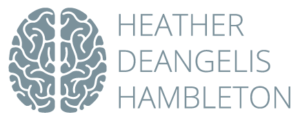When I climbed Mt. Kilimanjaro, I didn’t know I had ADD.
I was still a few years away from even knowing what inattentive adult ADHD was. Back then, even experienced, skilled clinicians like myself still thought of ADHD as a “kid” thing – an adolescent boy uncontrollably zipping around a classroom or staring out the window, daydreaming. So words like brain activation, attention deficit, executive function and emotion regulation weren’t even in my vocabulary when I set out to climb Africa’s tallest peak.
When I told my friends & family I was going to climb Mt. Kilimanjaro, they told me I was crazy. Was it crazy for a 28-year old girl from New York City to travel half-way around the world with nothing but barely broken-in hiking boots and a 30-pound backpack of gear to actually think she could summit the world’s highest free-standing mountain? A feat many triathletes and Olympians don’t achieve, despite their superhuman athletic ability and extreme training regimens? Crazy? Me?! Nah…
“But you don’t even hike! You can’t do that, that’s a crazy idea!” one friend said when I told him I had already booked my flight to Tanzania and started training for the climb. He was right. I didn’t hike and I was definitely not a “hiker,” although the 6-days-a-week intense training schedule I had to follow quickly made me into one. Even the personal trainer I hired to coach me through daily early morning workouts to ensure I was in tip-top shape for the 19,341-foot climb didn’t have much confidence in me. “You sure you wanna do this?! That’s not a goal, that’s a death wish. You’re crazy!”
Almost two decades later, I now know I wasn’t crazy for thinking I could summit Kili. Well, maybe just a little crazy. But attempting to climb one of the tallest peaks in the world when I didn’t even hike was exactly what my brain needed at the time – and on a smaller scale, exactly what my brain needs on a daily basis. My friend and trainer didn’t know it at the time, but there was something about them saying I couldn’t climb Kili that made me know I would. It was as if their discouraging doubts lessened the doubts I had of myself, and provided a much-needed serving of dopamine candy to sugar rush my toddler-like brain.
You see, people with ADHD and atypical brains are big thinkers, but we cut ourselves off at the knees before others have a chance to.
People with ADHD live in an internal bubble of self-doubt every day, all day. We’re experts at letting negative thoughts run amok, like children on a playground. We keep ourselves small because we learn our neurotypical counterparts are often afraid of our big emotions and even bigger ideas. But when someone else doubts us, it changes the trajectory – our self-doubt becomes externalized and we have something to push against, something to work with, we can “brain dump” our inadequacies, rather than riding solo on our mind’s perpetual merry-go-round.
But on Kili, there’s no room for self-doubt. If you even start to think about your blisters rubbing against your hiking boots or the pounding headaches from dehydration, you shut down. If you let your attention drift to your numbing fingers and toes or your uncontrollable vomiting and bowel changes, you’re done. And if you dare think about the “death zone” ahead – where the inability to recharge and refuel become almost impossible as your digestive system shuts down to direct all oxygen to where it’s needed most: to your brain, lungs and heart, you must as well give up and go home.
Somewhere around 16,000 feet above sea level, self-doubt becomes a bad word with deadly consequences. On the Western-Breach, the more secluded route to the top of Kili, where it looks like Mars outside your tent and feels like your body’s been zapped of everything human, you realize quickly your physical survival depends on mental strength. You realize somewhere between Lava Tower and Crater Camp you have to quiet your inner critic and harness whatever mental grit you have stored away if you’re going to make the final ascent to Kilimanjaro’s peak, Uruhu.
Attempting to summit a mountain is a lot like living with ADHD.
Having an atypical brain, in a neurotypical world is a heap of challenging obstacles and overwhelming possibilities. Sudden missteps or potential wrong moves can leave us tumbling down the peaks of daily living, out of jobs and relationships. But climbing Kili is not a technical feat. You don’t need crampons, harnesses, rappelling devices or mechanical ascenders. If you’re in decent shape and with proper cardiovascular training, most will summit. Climbing Kili is all about mental fortitude. Resiliency. Perseverance. Training. Put one foot in front of the other “pole, pole” as they say on the mountain in Swahili (pronounced polay polay, – translation “slowly, slowly”), reminding you to take your time, plant your hiking pole, and breathe.
When I work with a client and hear them dreaming or thinking big or pondering a “crazy” goal, I know we’re in the right place.
I tell them that brain activation lies in discovering what lights them up, what makes them shine, what allows them to show up in the world as their best self. And when the inevitable doubt creeps in, from themselves or others, I remind my clients the tools for optimal brain function and calming overwhelm are the same that allowed me to summit successfully: resiliency, perseverance, training. I tell my clients to plant their neurological hiking pole in something solid every day and breathe. “Pole, pole.” I tell my clients to welcome the nay-sayers, but rather than ingesting discouraging remarks, I tell them to use doubts and criticisms as dopamine-rich food for our brains. And then I tell them to smile and say thank you the next time someone calls their idea or goal “crazy.”

